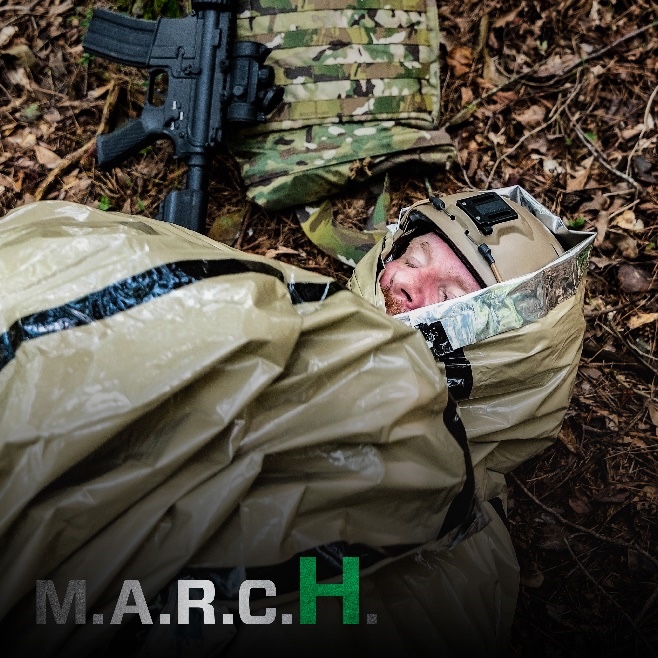The M.A.R.C.H. algorithm is laid out differently from Advanced Trauma Life Support (ATLS) which uses Airway, Breathing, and Circulation (ABC) as the order of treatment to instead use Massive Hemorrhage, Airway, Respiration, Circulation, Hypothermia/Head Injury for prioritizing lifesaving treatments. Among these critical steps, hypothermia is included in the algorithm’s final phase of care.

Despite advancements in trauma care over the past three decades, trauma remains among the leading causes of death. In penetrating trauma, what you cannot see occurring is the lethal diamond of hypothermia, hypocalcemia, acidosis, and coagulopathy. The lethal diamond is recognized as a significant cause of death in patients with traumatic injuries. Thus, failing to stop any one of the diamond’s complicating factors leads to worsening hemorrhage and eventual death.
If a patient has lost blood, they have lost body heat meaning you are fighting an uphill battle to intervene. If you are not preventing hypothermia, then you are not properly treating your patient. So, what should you do?
According to TCCC Guidelines, these are the steps that you should take:
1. Take early and aggressive steps to prevent further body heat loss and add external heat, when possible, for both trauma and severely burned casualties.
2. Minimize casualty’s exposure to cold ground, wind, and air temperatures. Place insulation material between the casualty and any cold surface as soon as possible. Keep protective gear on or with the casualty if feasible.
3. Replace wet clothing with dry clothing, if possible, and protect from further heat loss.
4. Place an active heating blanket on the casualty’s anterior torso and under the arms in the axillae (to prevent burns, do not place any active heating source directly on the skin or wrap around the torso).
5. Enclose the casualty with the exterior impermeable enclosure bag.
6. As soon as possible, upgrade hypothermia enclosure system to a well-insulated enclosure system using a hooded sleeping bag or other readily available insulation inside the enclosure bag/external vapor barrier shell.
7. Pre-stage an insulated hypothermia enclosure system with external active heating for transition from the non-insulated hypothermia enclosure systems; seek to improve upon existing enclosure system when possible.
8. Use a battery-powered warming device to deliver IV/IO resuscitation fluids, in accordance with current CoTCCC guidelines, at flow rate up to 150 ml/min with a 38°C output temperature.
9. Protect the casualty from exposure to wind and precipitation on any evacuation platform.
These recommendations are from the TCCC Guidelines which can be found at: www.deployedmedicine.com/content/40
Tools to Aid in Hypothermia
TacMed Solutions™ offers a variety of products built to assist preventing and treating hypothermia including the HELIOS® System, Emergency Bivvy, and more. To stock your kit with these essential tools, check out TacMed Solutions™ at tacmedsolutions.com/collections/m-a-r-c-h-tccc/hypothermia.

